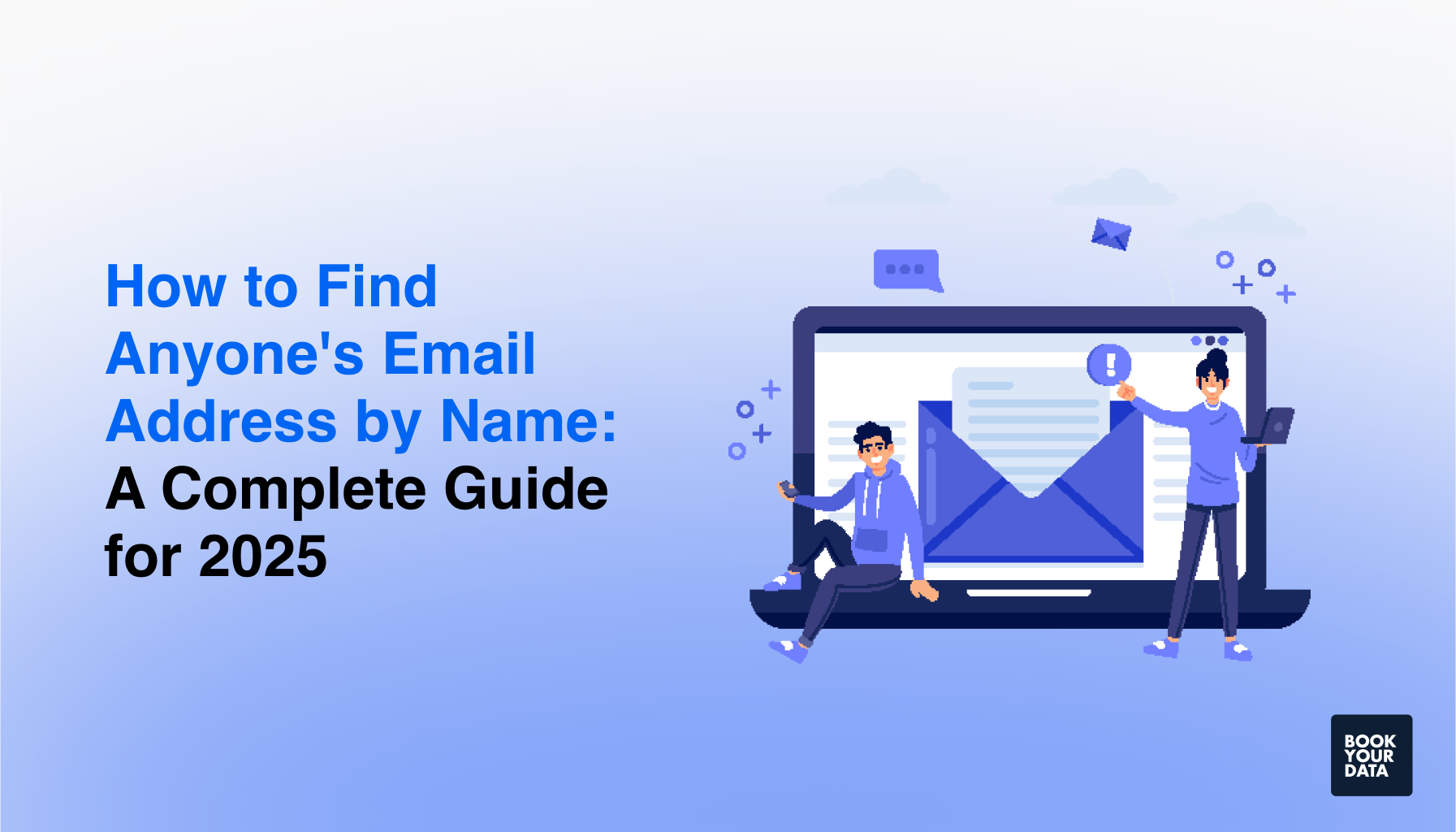How to see if someone read your email: A complete guide for 2025
It is becoming increasingly difficult to find out if someone has read your email, as platforms like Gmail have taken advanced steps to block tracking pixels and images from unknown or untrusted senders. This has caused many marketers to change the way they check the open rates and track the success of their email marketing campaigns.
Monitoring open rates is still a common thing to do, as even though it is no longer the most reliable metric, it still helps flag issues like poor deliverability or subject lines that don’t connect.
It is important to know when your email was read, as it helps you understand if your message is reaching people and whether your outreach strategy is working. There are many tools, like email tracking software, read receipts, or CRM integrations, that can still give helpful signals.
By reading this guide, you will learn how to use these tools step-by-step to check if your emails are being opened and learn how to improve your email performance.
How to see if someone has read your email?
To see if someone has read your email, you need to consider some strategies, including read receipts, using email tracking tools, inserting an image in an HTML email, custom URL tracking, and using third-party email analytics platforms.
Most marketers report that average email open rates range between 46% to 50%, which shows how often emails are opened, according to Hubspot’s blog research report from 2023 titled: “The Ultimate List of Email Marketing Stats That We Think You Should Know”.
81% of companies use email as part of their marketing strategy, and 64% of small businesses use email marketing, according to a 2024 Forbes report titled “49 Top Email Marketing Statistics”.
Determining whether recipients have read your outreach emails is still a major challenge, as businesses need to measure engagement to improve their strategies, but this has become difficult due to email privacy features and new filters. Many companies now use various techniques like read receipt notifications, which confirm when an email is opened, and more advanced strategies like lead generation tools that track recipient interactions.
These strategies are described below.
1- Read receipts
Read receipts are email features that notify the sender when a recipient opens their message. The purpose of read receipts is to show that the email has been viewed, which is useful in sales, outreach, and internal communication. It is important for businesses to track read receipts as it helps check if the recipient is interested in their emails, so they can follow up at the right time.
There are also some limitations with read receipts, as some recipients can often deny sending a confirmation. For example, Gmail only allows read receipt requests for Google Workspace accounts and not personal Gmail users. You can use read receipts with other tracking tools to overcome these limitations and increase the efficiency of your outreach process.
How to add a read receipt in Gmail
- Use a Google Workspace account, as read receipts are not available on a personal Gmail account.
- Click on ‘Compose’ to write a new email.
- Click the three-dot menu found in the bottom right of the email window.
- Select ‘Request read receipt’.
- Write an email explaining that you need a read receipt and why.
How to add a read receipt in Outlook
- Open your Microsoft Outlook account and create a new email.
- Click the options tab found in the email window.
- Mark the ‘Request a Read Receipt’ option to be notified when the email is read.
- Use email search by name to find the target’s address and send the emails that you can track.
Best for
- Tracking outreach and follow-up emails.
- Checking the engagement rate.
Benefits
- Sends a confirmation if the email was opened.
- Senders can know the time when the email was read.
- Helps manage time for follow-ups.
Limitations
- Not supported on all email platforms.
- Recipients can decline the receipt notification.
2- Using email tracking tools
Using email tracking tools is important for understanding how your recipient interacts with your messages, and it helps you measure performance and improve your outreach. These tools also allow you to measure the average open rate for email marketing and other important metrics.
Many tools like HubSpot and Mailtrack offer useful tracking features like real-time open notifications, click tracking, recipient location, and even the type of device used to view the email. You can also combine these tools with an email search engine to find contact information of potential leads so you can send more emails and analyze their engagement.
How to set up email tracking
- Select a tracking tool like Mailtrack or HubSpot.
- Install the extension or integrate it with your email platform like Gmail or Outlook.
- Enable tracking settings in your dashboard or preferences.
- Write your emails normally, and the tracking will begin automatically.
Best for
- Sales teams that monitor email outreach.
- Marketers who analyze campaign performance.
- Professionals looking to make follow-ups effectively and at the right time.
Benefits
- Provides data on open rates, click rates, location, and device usage.
- Improves lead generation when combined with email search engine tools.
- Improves timing and personalization in campaigns.
Limitations
- The read receipts can get blocked by email privacy settings.
- Free versions of these tools usually offer limited analytics or branding.
3- Inserting an image in an HTML email
Inserting an image in an HTML email is a method that uses a small or even invisible image embedded in the email, so when the recipient opens the email and their email client loads the image, it triggers a signal that tells the sender the email has been opened.
This method is more reliable than basic read receipts and is used by nearly all major email marketing tools, and has fewer significant limitations. HTML image tracking works silently in the background and provides more consistent feedback about when an email is opened and viewed.
How to set up email tracking
- Create or open your email campaign in your marketing tool or HTML editor.
- Insert a small tracking pixel and use a unique URL.
- Upload the image to your server or use one provided by your email service provider.
- Add the image to the email’s HTML body using: <img src="your-tracking-url" width="1" height="1" />.
- Once the email is opened and the image loads, the tracking system will notify you about it.
Best for
- Marketers who run large-scale email campaigns.
- Businesses that use HTML-based newsletters.
- Agencies that need detailed analytics on email performance.
Benefits
- Provides consistent open rate tracking without user interaction.
- Works silently without prompting the recipient.
- Easy to automate and integrate with analytics dashboards.
Limitations
- Blocked by some email clients like Gmail and Apple Mail.
- Doesn’t track if images aren’t loaded or viewed by the recipient.
4- Custom URL tracking
Custom URL tracking is a method used to monitor how recipients interact with links included in an email, and it allows marketers to track specific actions like link clicks, page visits, and even conversions after the email is opened. You can also add unique tracking parameters to the end of URLs within the email content, known as UTM tags.
The UTM tags include details like the campaign name, source, and medium, which help marketers identify where the traffic came from and how effective each email is. When a recipient clicks on a tagged link, the data is sent to analytics tools like Google Analytics or a CRM platform.
Implementation process
- Choose the URL you want to track, like a product or landing page.
- Add UTM parameters to the URL using a tool like Google’s Campaign URL Builder.
- Insert the tagged URL into your email content.
- Send the email normally, and the clicks will be recorded once a recipient interacts with the link.
Best for
- Tracking the clicks and user behavior from email campaigns.
- Monitoring the performance of specific promotions.
Benefits
- Provides detailed information about the recipient’s behavior.
- Tracks campaign performance more accurately.
- Integrates easily with analytics and CRM tools.
Limitations
- Does not track opens or email views.
- Some users may avoid clicking visibly tagged links.
5- Using third-party email analytics platforms
Using third-party email analytics platforms gives businesses a deeper understanding of how their email campaigns are performing, as they offer more advanced metrics, like engagement heatmaps, deliverability scores, recipient behavior across devices, and performance benchmarks. They are important when you're using multiple email sources or integrating data across marketing channels.
Businesses often buy email lists when they are planning to use third-party email platforms, as they can help them track performance and shortlist high-quality contacts. Many email finder tools can also help you verify email addresses without sending emails and check your average email open rate benchmark, so you can reduce bounce rates and only track emails that reach the right recipient.
Popular third-party email analytics platforms
- Hubspot email tracking
- Mailchimp
- MailTrack
- GetResponse
- Klavio
- Campaign Monitor
- Constant Contact
Set up of a mailing list via a third-party option
- Import your contact list manually or sync it from your CRM.
- Use email finder tools to build or enrich your mailing list.
- Clean your list by verifying email addresses without sending emails to reduce bounce rates.
- Insert a tracking pixel into your email templates for open tracking.
- Configure DNS settings like SPF, DKIM, and DMARC to authenticate your sending domain and improve deliverability.
- Organize the list based on factors like engagement, source (organic vs purchased), or campaign goals.
- Review the analytics dashboard setup to make sure that the tracking and reporting features are activated.
Best for
- Businesses that want to send campaigns to both organic and purchased lists.
- Marketers who need detailed engagement and deliverability metrics.
- Agencies that need to manage campaigns across multiple brands.
Benefits
- Tracks the performance of emails sent to both organic and purchased lists.
- Supports A/B testing, design optimization, and advanced segmentation.
- Helps build B2B contact lists through integration with email finder tools and lead databases.
- Integrates smoothly with CRMs, ad platforms, and automation tools for end-to-end tracking.
Limitations
- Paid plans may be expensive for small businesses.
- Many tools may collect more data than needed for small-scale campaigns.
What are email read receipts?
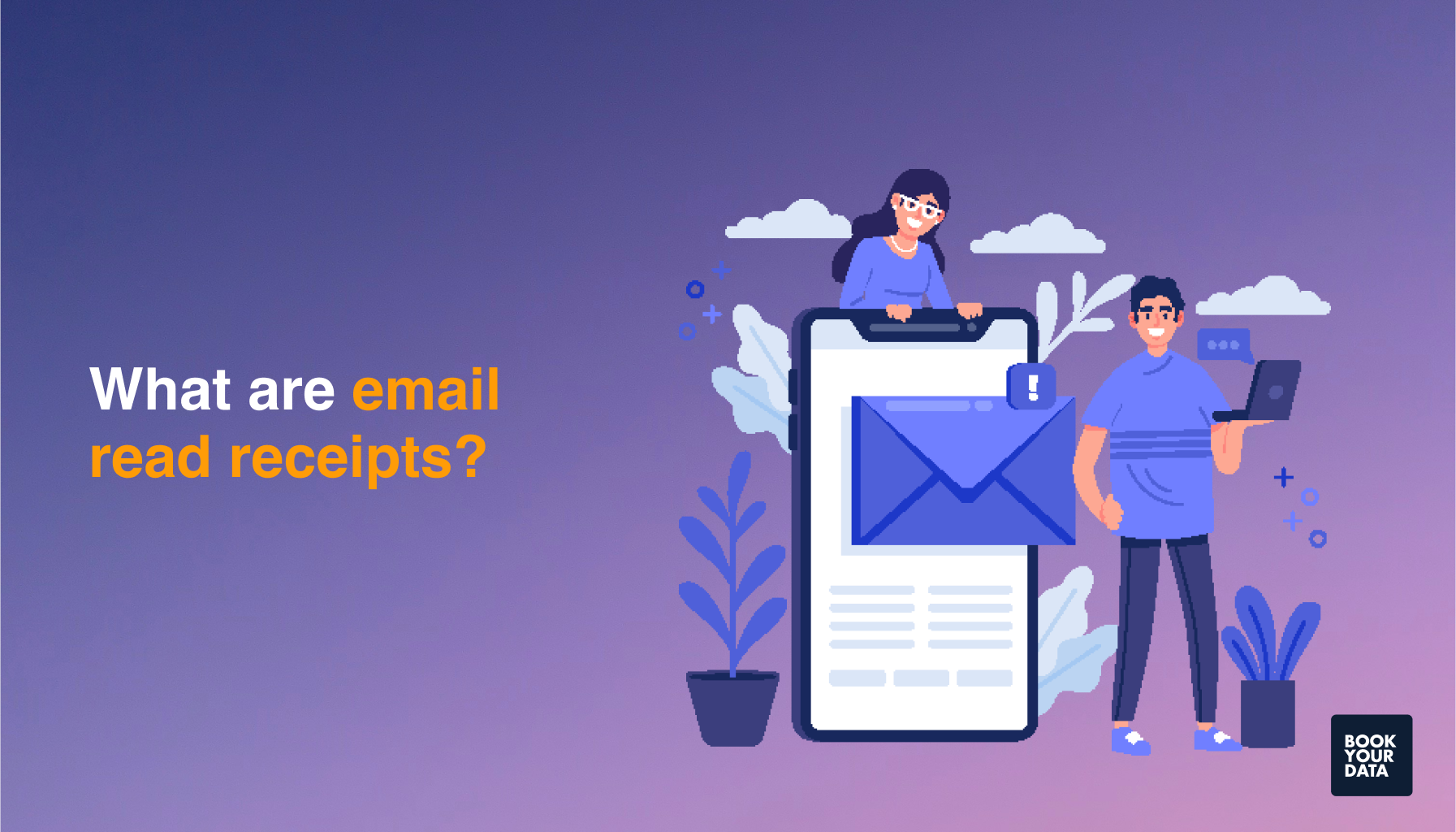
Email read receipts are notifications that let the sender know when their email has been opened by the recipient. These read receipts are very similar to the WhatsApp blue ticks as they confirm the message was seen to add a layer of communication clarity. Read receipts help businesses monitor recipient engagement, which allows marketers and sales teams to see which leads have interest and plan follow-ups more effectively.
You can also combine read receipts with premium email lists from providers like Bookyourdata. These insights can be even more valuable as they help you verify whether your leads are engaging with your emails. This makes it easier to improve your outreach strategies.
How do email read receipts work?
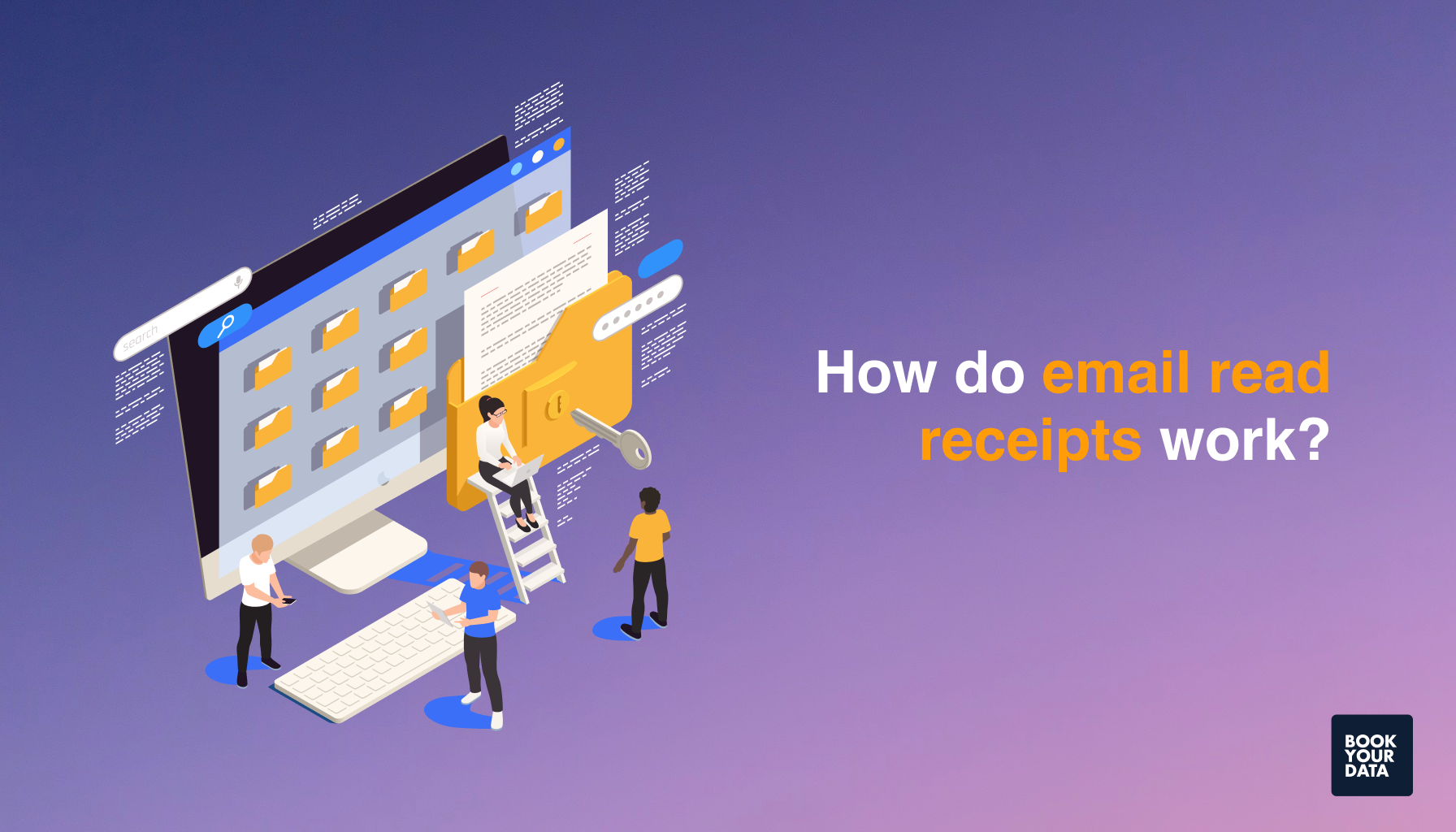
Email read receipts work like regular read indicators in messaging apps, as they notify the sender when a recipient opens their email. This is a feature that helps businesses and professionals track the engagement of their email marketing and improve their follow-up strategies. Senders can also request read receipts through major email providers like Gmail, Outlook, and ProtonMail, depending on their subscription plan or settings.
Read receipts can provide many details like the time the email was opened, the recipient’s approximate location based on the IP address, the duration the email was viewed, click rates on embedded links, and even the device or application used to open the message.
These features are different across platforms, as some may require manually selecting “Request Read Receipt” before sending, while others have automatic tracking options. The type of information they provide helps businesses check the success of their outreach more effectively, think of better follow-up strategies, and improve email marketing campaign performance.
What are the legal considerations of email tracking?
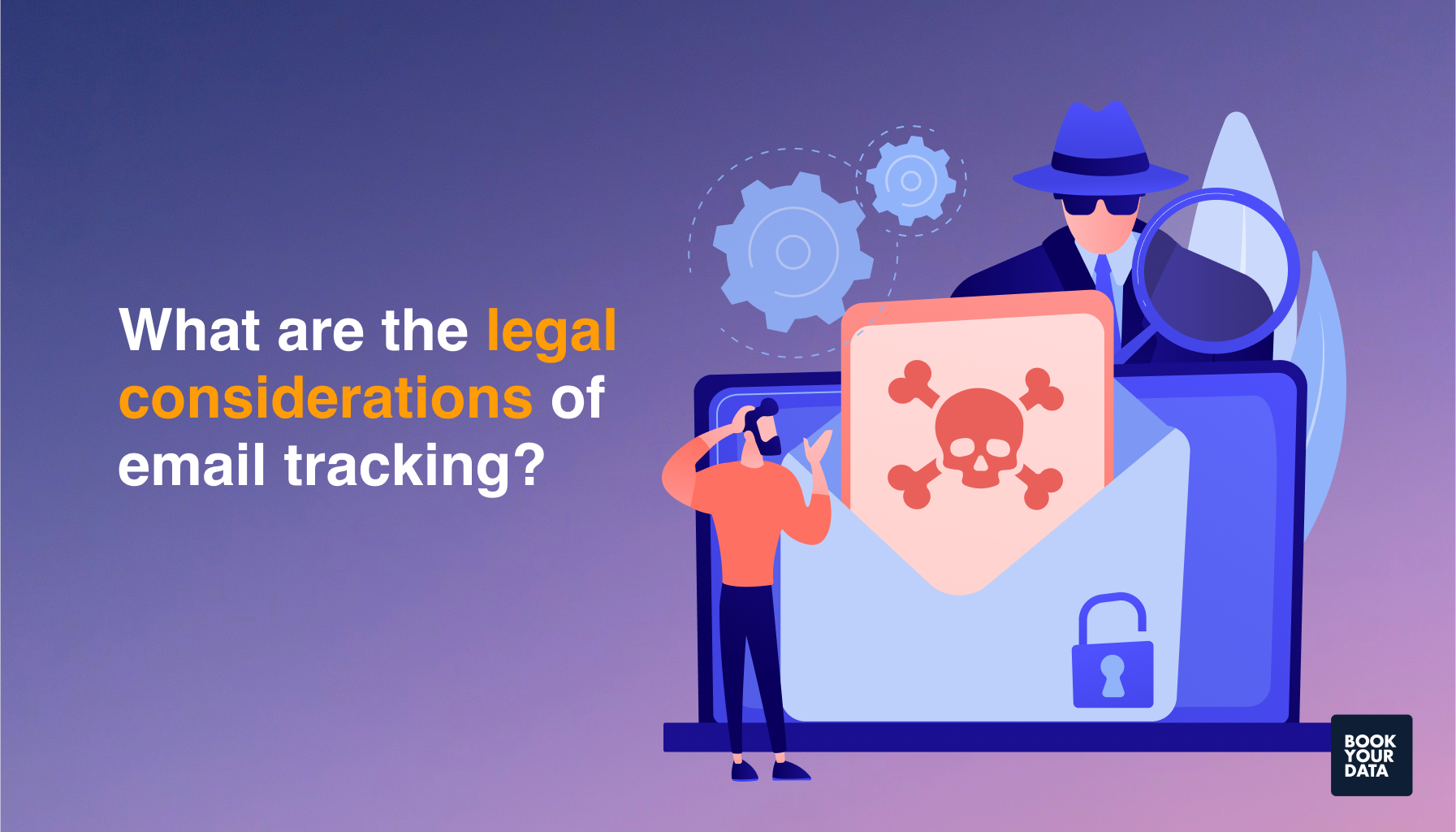
The legal considerations of email tracking are the CAN-SPAM Act, GDPR, CCPA, CASL, and PIPEDA.
Email tracking can easily reveal when, where, and how an email is opened, which is often without the recipient's knowledge, so it can raise some major privacy concerns. Most of these laws can vary by location, so one action could be legal in one country and banned in another.
For example, using tracking pixels in Europe without clear user consent can violate the GDPR, while in the USA, it might be legal to some extent under the CAN-SPAM Act. The ethical use of email tracking is important for all businesses to consider, and they should provide legitimate reasons for it, like performance monitoring of email campaigns sent to customers or leads.
These legal considerations are described below.
- CAN-SPAM Act: The Controlling the Assault of Non-Solicited Pornography and Marketing (CAN-SPAM) Act is a data protection law in the USA that allows email tracking without asking for consent from the recipient before reaching out, only if the email includes accurate sender information, a physical postal address, and a clear option for the recipient to leave the communication.
- GDPR: The General Data Protection Regulation (GDPR) is a data privacy law in the EU that states that tracking email opens or clicks is under personal data processing and requires full consent from the recipient before sending the email. The recipient should also be informed about what data is being collected and why.
- CCPA: The California Consumer Privacy Act (CCPA) states that email tracking is legal only if the company sending the emails informs users about their practices in their privacy policies and provides a mechanism for users to stop the company from using or collecting their data.
- CASL: Canada’s Anti-Spam Legislation (CASL) requires full consent from the recipient before sending commercial emails or tracking user interactions. The Organizations sending the email should also clearly state the purpose of tracking and provide contact information.
- PIPEDA: Personal Information Protection and Electronic Documents Act (PIPEDA) requires businesses to ask for full consent of the recipient before collecting or using personal information through email tracking. It also gives individuals the right to access their data that is being used and request any corrections or removals.
What are the benefits of email read receipts?
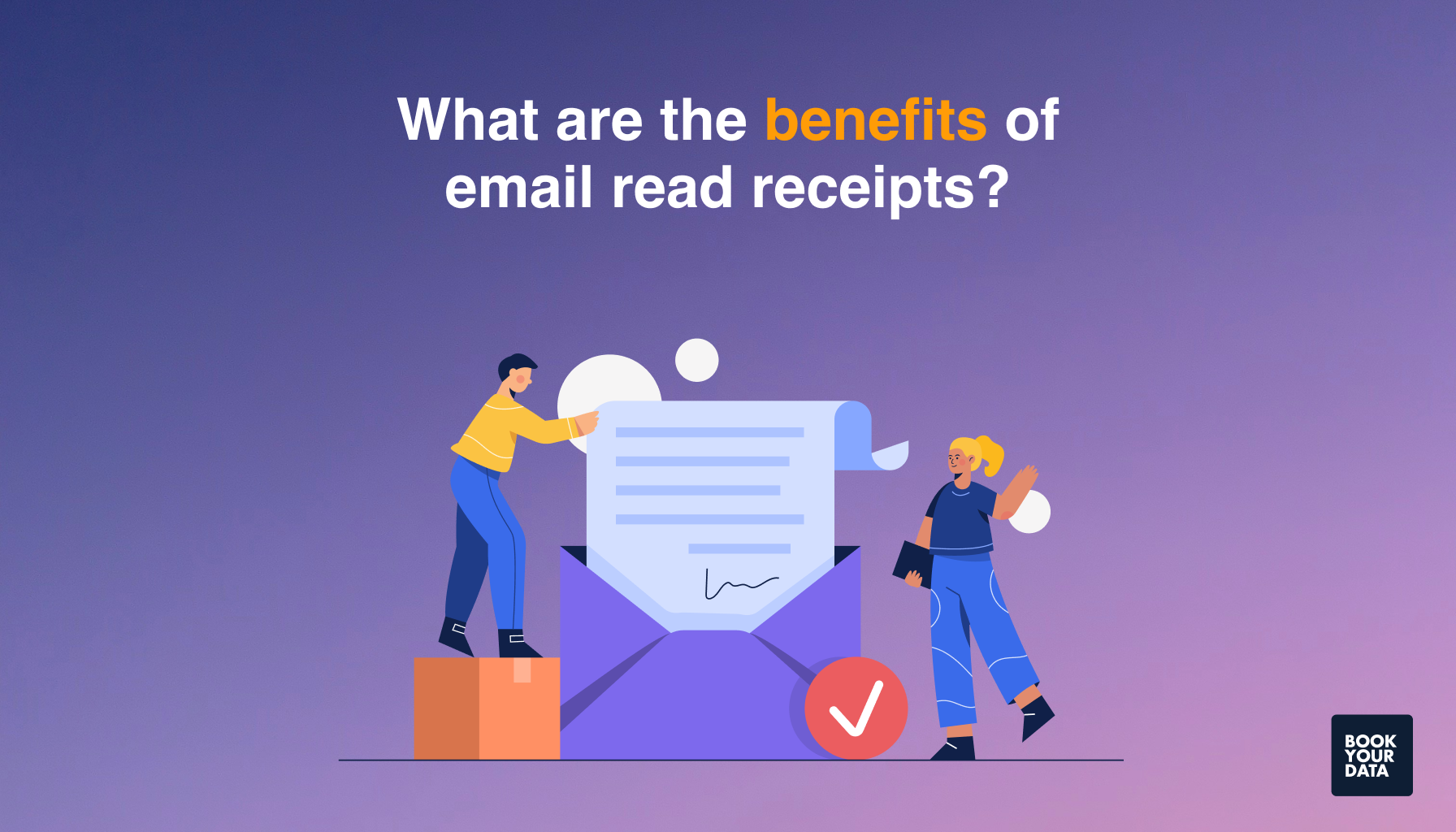
The benefits of email read receipts are confirmation of delivery, timely follow-ups, enhanced communication, and improved efficiency.
These benefits are described below.
- Confirmation of delivery: Confirmation of delivery means that read receipts let the sender know when an email has been opened, which confirms that the message has successfully reached the recipient’s inbox. This makes it easy to know which leads are actually interested and what type of emails have higher open rates.
- Timely follow-ups: Timely follow-ups mean that knowing when a recipient has opened an email allows businesses to conduct follow-ups at the right time and more effectively. If a lead opens an email multiple times without replying, it means that they might be interested in the product or service.
- Enhanced Communication: Enhanced communication means that read receipts allow better communication between he sender and the receiver as they provide information on how the recipient engages with the email. This data is valuable for marketers and sales teams that want to develop more email outreach strategies or want to learn how to find someone’s email.
- Improved Efficiency: Improved efficiency means that businesses can use read receipts to make their email processes more efficient and focus on leads that show actual interest. It is also beneficial for teams that have large email lists from list-building services, as they can narrow down the list to only focus on the high-quality leads.
What are the limitations of email read receipts?
The limitations of email read receipts include not always being accurate, raising privacy concerns, and being blocked.
These limitations are described below.
- Not always accurate: Not always accurate means that read receipts can sometimes provide inaccurate indications about whether an email has been read or not. Some email clients trigger read receipts as soon as the message is opened, not when the recipient reads the content.
- Privacy concerns: Privacy concerns can be raised when email read receipts are used without the consent of the recipient. Many regions, like the EU, have stated that using tracking technologies like email read receipts may violate privacy laws or ethical guidelines.
- Can be blocked: Can be blocked means that most modern email services, like Gmail or Outlook, give users the option to block read receipts. The sender might not be notified even when a message is opened or read, which leads to wasted efforts.
What affects email open rates?
The factors that affect email open rates are subject line personalization, images (multimedia content), customized email content, send times, and targeting the right recipients.
Effective email marketing and cold outreach rely on several important elements that determine whether recipients open your emails. It is important to understand and optimize these factors to improve engagement and response rates. Email open rates need to be high for the success of any campaign in outreach scenarios where first impressions matter the most and the opportunities are limited.
These factors are described below.
- Subject line presentation: Subject line presentation refers to customizing the subject lines in the email to the recipient’s interest. If you add the recipient’s name, company, or reference to a recent event in the subject line, it will increase their effectiveness and the email will feel more relevant to the recipient.
- Images (multimedia content): Images like engaging visuals and multimedia elements can boost open rates by 10% or more, as they provide an attractive preview when emails are displayed in the inbox.
- Customized email content: Customized email content refers to personalizing the email to match the recipient’s needs or interests. This can increase the effectiveness of emails as the recipient will be more interested in opening them and reading their content.
- Send times: Send times mean that you should choose the best time to send cold emails, as it can affect the open rates significantly. Many people suggest that the best time to send these emails is between 10 AM and 2 PM on working days, as it is when most leads are at work and regularly check their emails.
- Targeting the right recipients: Targeting the right recipients is important, as your email can only be effective if it reaches the right people. You should target the recipients based on industry, job role, or previous interactions to make sure that your email is relevant to them.
What can set your emails apart?
The factors that can set your emails apart are personalized subject lines, relevance of content, audience segmentation, and enhancing emails with multimedia.
Setting your emails apart in your recipient’s crowded inbox in a B2B and outreach context involves delivering the right message to the right person at the right time. We need our emails to stand out with strategies like personalization, relevance, and smart segmentation using tools like B2B databases, as most leads get tons of generic cold emails that they do not even bother opening.
- Personalized subject line: A Personalized subject line refers to using a subject line that’s specifically customized for the recipient and includes their name, company, or a point relevant to their industry. This makes the recipient more interested in your email and increases open rates.
- Relevance of content: Relevance of content means that the email should focus on what the recipient cares about. If your content matches their needs, goals, or pain points, they are more likely to read it and respond.
- Audience segmentation: Audience segmentation refers to dividing your contact list into smaller and targeted groups based on industry, job role, or interest. This makes your message more relevant to the recipient.
- Enhancing emails with multimedia: Enhancing emails with multimedia refers to adding visuals like images, videos, or GIFs to make your email look more attractive and interesting to the recipient, so it is easier to understand.
What are the best practices for email tracking?
The best practices for email tracking are respect for privacy, data responsibility, transparency and consent, mindful follow-ups, and tech awareness.
Marketers and professionals should use email tracking responsibly, transparently, and in full compliance with data protection laws like the GDPR, CCPA, or CAN-SPAM Act. One of the most important practices is allowing the recipients to know that the email is being tracked and providing them with an opt-out option to maintain trust and follow ethical standards.
These best practices are described below.
- Respect for privacy: Respect for privacy means that the senders should only track emails when there is a valid business reason. They need to avoid tracking sensitive or internal communications, as respecting privacy builds trust with recipients and keeps your outreach ethical.
- Data responsibility: Data responsibility means that the sender should store and handle email engagement data securely and use it only for its intended purpose. Collecting the data without the knowledge of the recipient and misusing it can cause legal trouble.
- Transparency and consent: Transparency and consent mean that the sender should let the recipient know beforehand that the email is being tracked or that their data is being collected. You should also give the recipient an option to exit the communication and refuse the data collection.
- Mindful follow-ups: Mindful follow-ups mean that you should conduct the follow-ups the right way and at the right time. Do not send a follow-up immediately after they open the email, as it is important to build a respectful and patient communication.
- Tech awareness: Tech awareness means that it is important to understand how your tracking tools work, as some email clients block trackers or return false opens, so don’t rely only on these signals to measure the success of your email outreach.
How accurate are email tracking methods?
The accuracy of email tracking methods depends on several technical factors, like the tracking method used and pixel embedding. Most tools use a small hidden image called a tracking pixel that tells you when someone opens your email, but this can be blocked by email apps like Apple Mail, ad blockers, or privacy settings.
If the platform uses mail opening read receipts, it means that the sender will get a notification when the recipient opens the email, and it is unknown whether they actually read the content. If the recipient forwards your email, it would still increase the open rate, which might make the data inaccurate. Email tracking can still be useful as it can help you understand if your emails are being seen, but it is ideal to also check things like click-throughs, replies, or conversions for more accurate tracking.
What causes inaccuracies in email tracking reports?
Inaccuracies in email tracking reports are caused by image blockers, privacy tools like Apple Mail Privacy Protection, shared devices, forwarded emails, and disabled tracking pixels. These inaccuracies can cause read receipts to never go through and cause inconsistencies in the tracking data.
How does email list quality impact open rate tracking?
Email list quality significantly impacts open rate tracking as poor data hygiene, like outdated or invalid addresses, lowers the open rates and ruins the tracking data, which makes it harder to measure actual engagement.
What role does data enrichment play in enhancing email engagement tracking?
Data enrichment plays an important role in enhancing email engagement tracking as it adds relevant context like job title and company size, which allows the recipient to receive customized content that increases engagement and provides more accurate tracking information.
Can verified email databases improve the accuracy of your email open tracking?
Yes, a verified email database can improve the accuracy of your email open tracking as it reduces bounce rates and ensures that the emails reach real and active users. This makes email open tracking more reliable and accurate.
How can firmographic data support smarter follow-ups after email opens?
Firmographic data can support smarter follow-ups after the email opens, as it helps customize and time the follow-ups to the lead’s business profile and interest. This makes your follow-ups more relevant and increases the chances of getting responses.
Can tracking email opens improve your cold email best practices?
Yes, tracking email opens improves your cold email best practices as it shows who is interested. This helps you improve your targeting strategy, optimize send times, and adjust messaging based on real behavior.
What role does email read tracking play in identifying decision-makers?
Read tracking plays an important role in identifying decision-makers as it helps find repeated opens or forwarded emails, which may help you find decision-makers within a company that have a higher interest in your services.
Which free sales tools help verify if someone read your email?
The free sales tools that help you verify if someone has read your email are Mailtrack, HubSpot CRM, and Streak. These tools show open activity and link clicks to help confirm if the emails were read.
What are the differences between a read receipt and a delivery receipt?
The differences between a read receipt and a delivery receipt are that a read receipt can indicate when an email has been opened or read by the recipient, while a delivery receipt indicates that the email has been delivered to the recipient.
What affects email open rates?
The factors that affect email open rates are subject lines, send times, personalization, list quality, and targeting. All these factors play key roles in whether emails are opened or ignored.
How can B2B contact databases enhance email open tracking and engagement?
B2B contact databases can enhance email open tracking and engagement as they offer clean, targeted, and enriched contacts, which improve delivery rates, open tracking, and engagement quality.
You can sign up with BookYourData today and receive your first 10 leads free.
[CTA1]
[CTA2]








